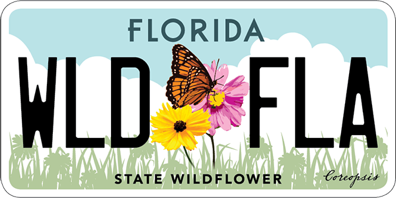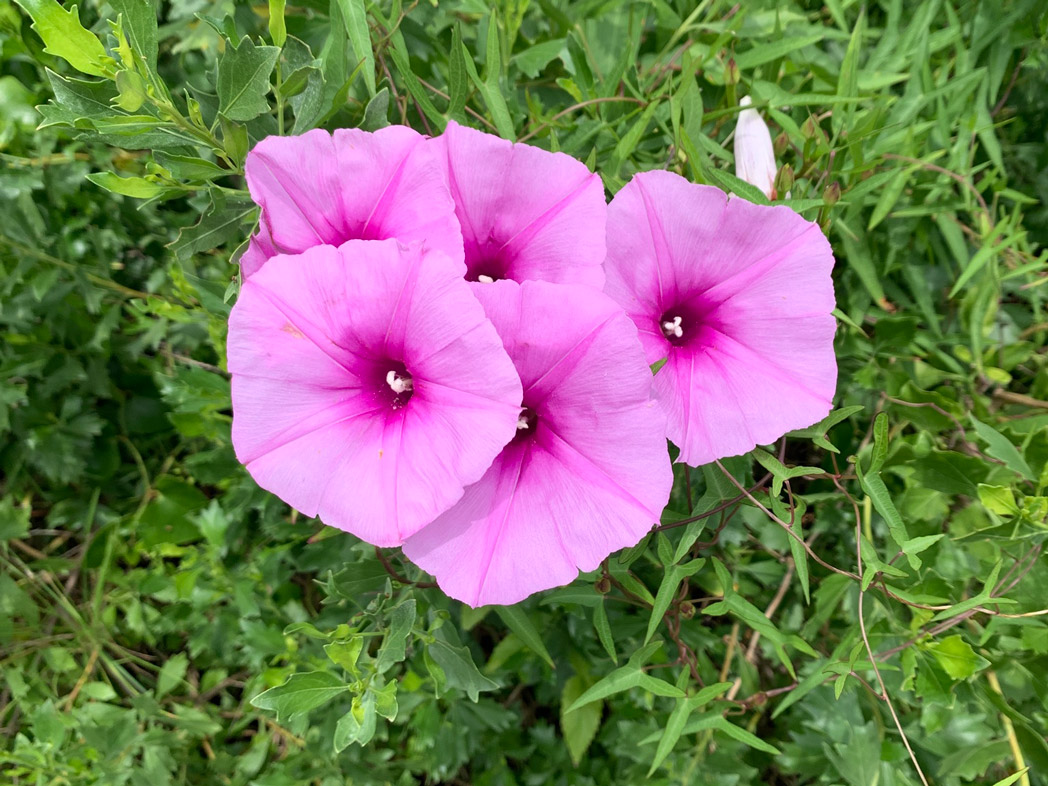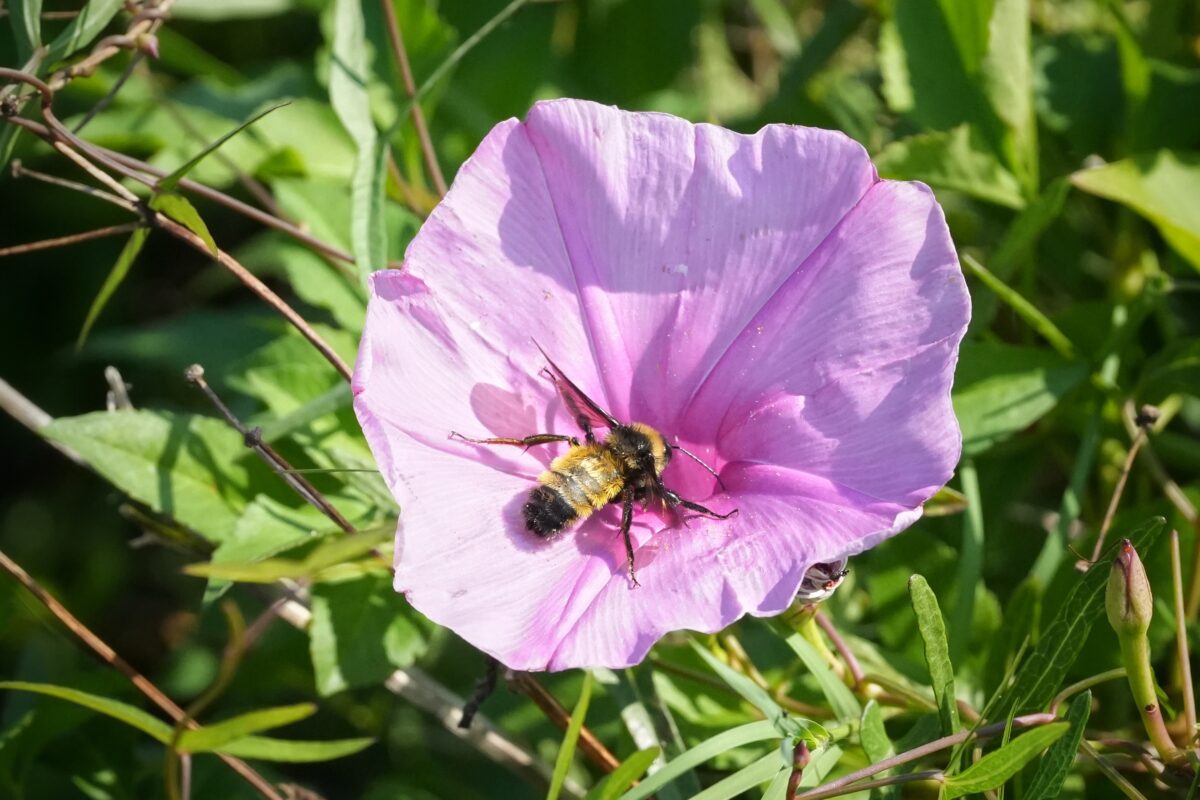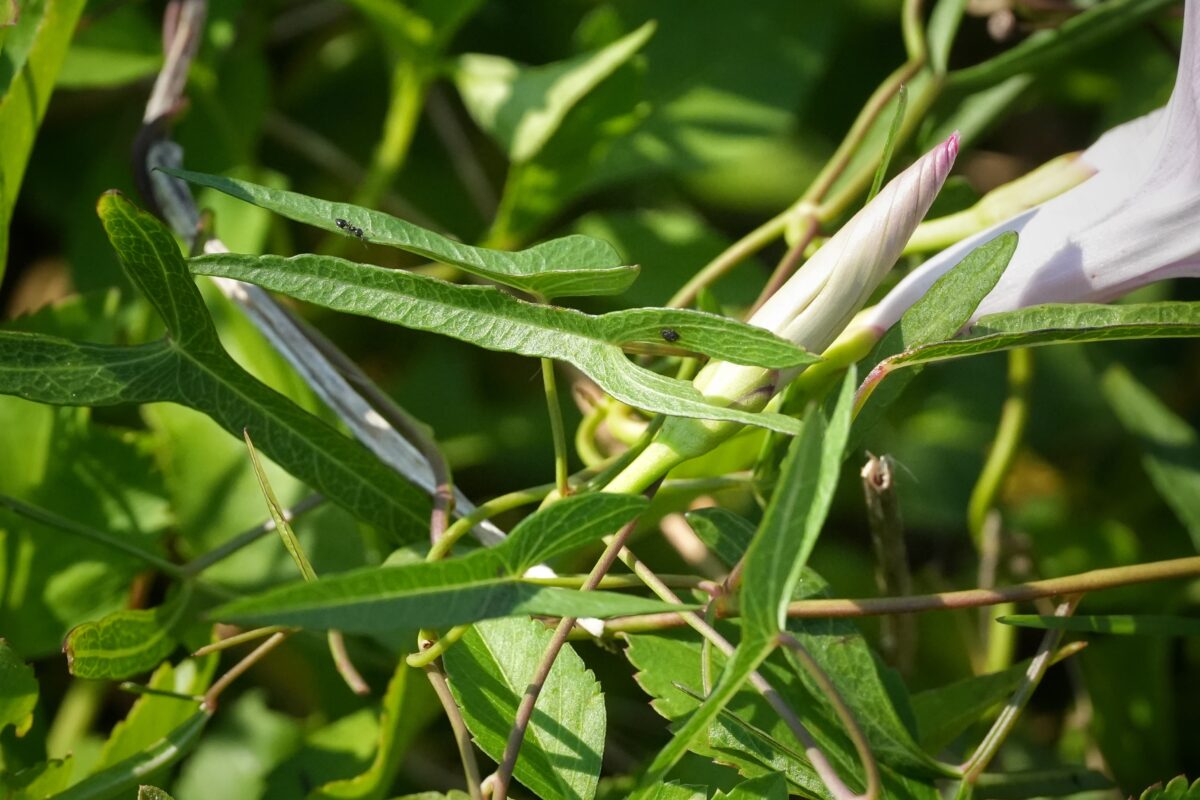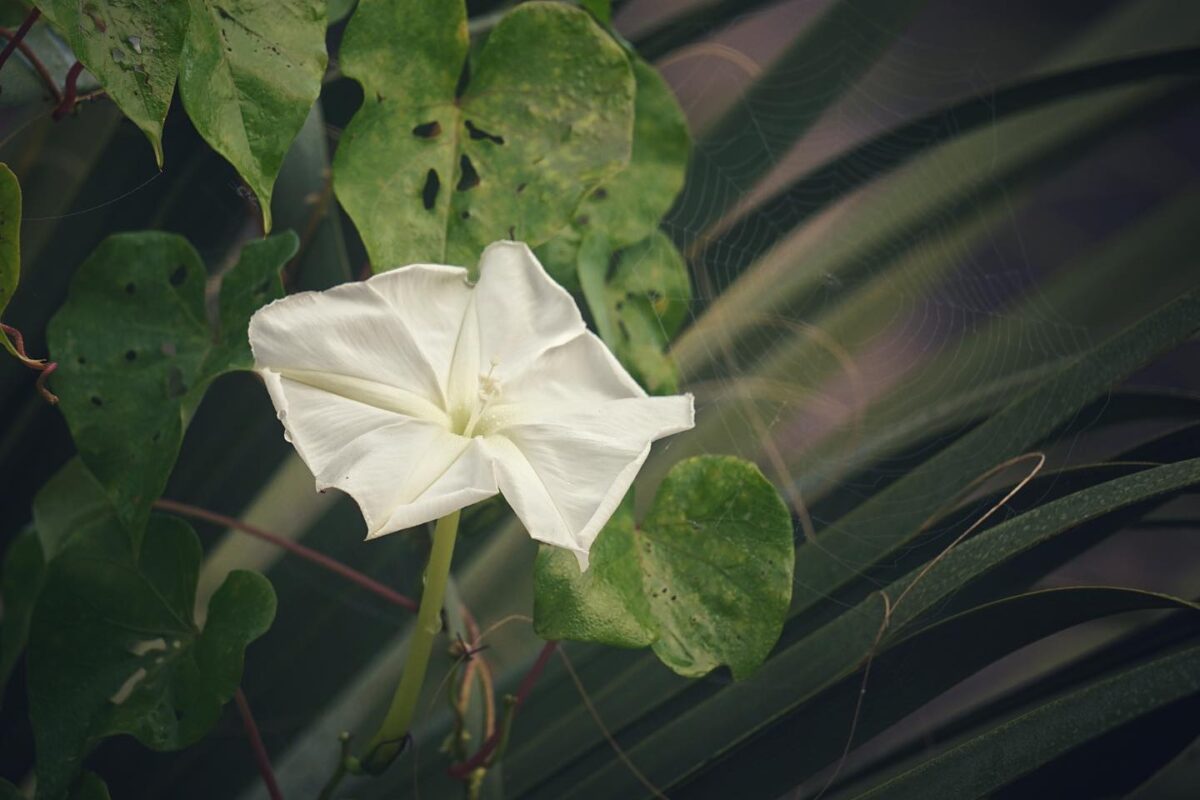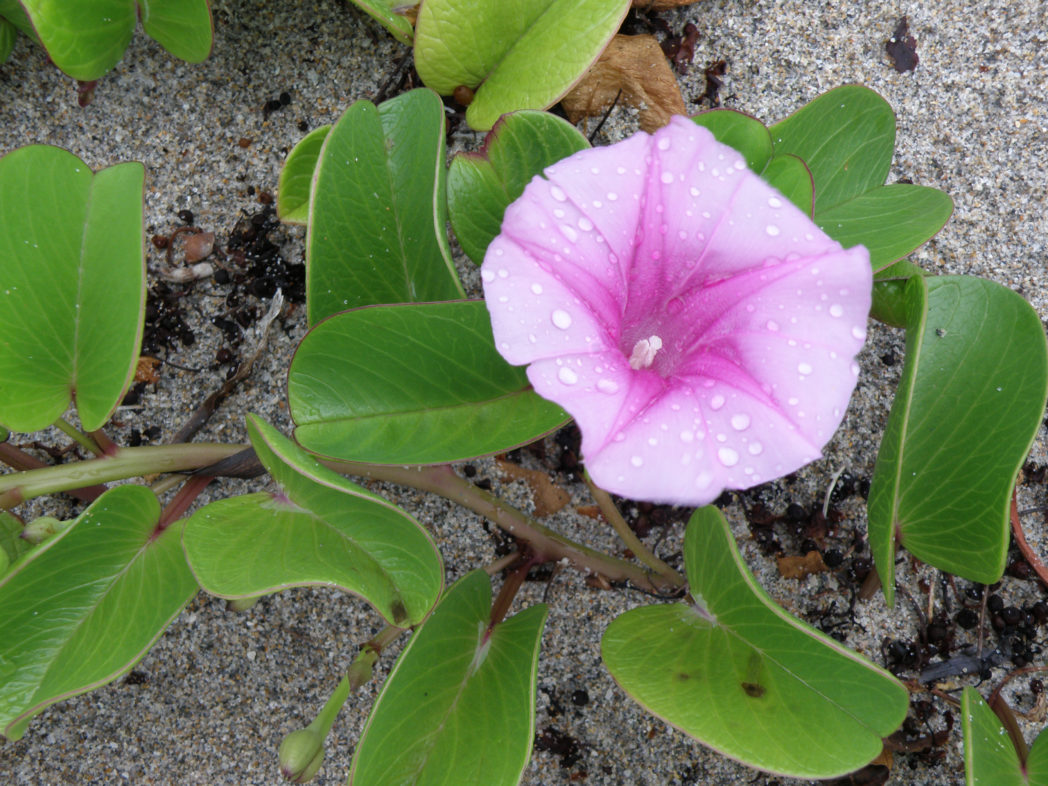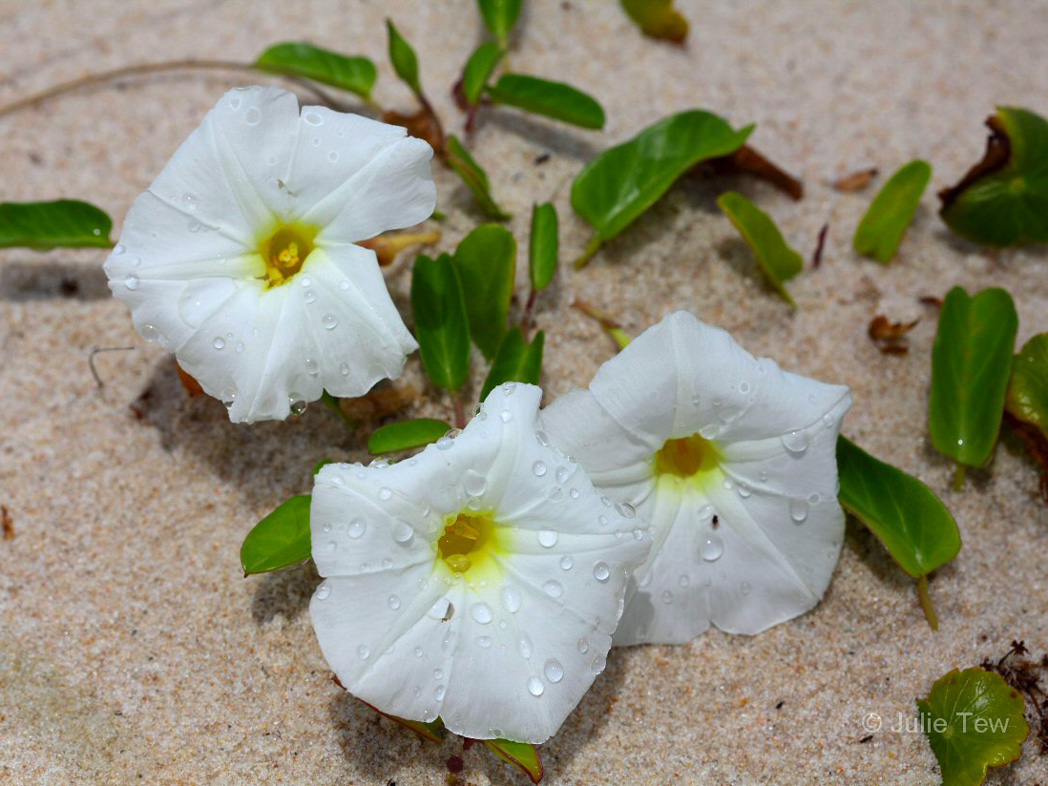Saltmarsh morning glory
Pictured above: Saltmarsh morning glory (Ipomoea sagittata) by Steph York (CC BY-NC). Click on terms for botanical definitions. View post as a PDF.
Saltmarsh morning glory (Ipomoea sagittata) is a trailing perennial vine found in Florida’s salt, floodplain and glade marshes, mangrove swamps and ruderal areas. Its showy blooms appear in summer and fall. The large nectaries and flowers attract many insects, but it is most visited by bees.
Saltmarsh morning glory flowers are solitary and funnel-shaped with five fused pink -to-purplish petals and a darker throat. Five greenish sepals cup the flower at its base. Sepals and stems are glabrous. Leaves are sagittate with long petioles. They are alternately arranged. Seeds are borne in globose capsules. Tendrils and underground rhizomes give the vine its vigorous mobility.
Like other members of the Ipomoea genus, Saltmarsh morning glory blooms in the morning and begins to wilt and close up by afternoon, hence the common name “morning glory.”
The family name Convolvulaceae comes from the Greek convolvere, which means “to wind,” referring to the winding nature of the stems. The species epithet sagittata is Latin for “arrow-shaped” and refers to the leaf shape.
Family: Convolvulaceae (Morning glory family)
Native range: Nearly statewide, with higher occurrence in coastal areas
To see where natural populations of Saltmarsh morning glory have been vouchered, visit florida.plantatlas.usf.edu.
Lifespan: Perennial
Soil: Moist sand
Exposure: Full sun to partial shade
Growth habit: 6’+ long
Propagation: Cuttings, division, seed
Florida regions of landscape suitability: North, Central, South
Garden tips: Saltmarsh morning glory does best when allowed to freely climb on a trellis or fence. Its rapid growth and sprawling tendency makes it generally unsuitable for formal gardens. It is highly salt tolerant and winter dormant.
Saltmarsh morning glory plants are occasionally available from nurseries that specialize in Florida native plants. Visit www.PlantRealFlorida.org to find a nursery in your area.
Learn more about Saltmarsh morning glory from the Florida Native Plant Society and the Institute for Regional Conservation.
For more information on other Ipomoea species, see these resources:
